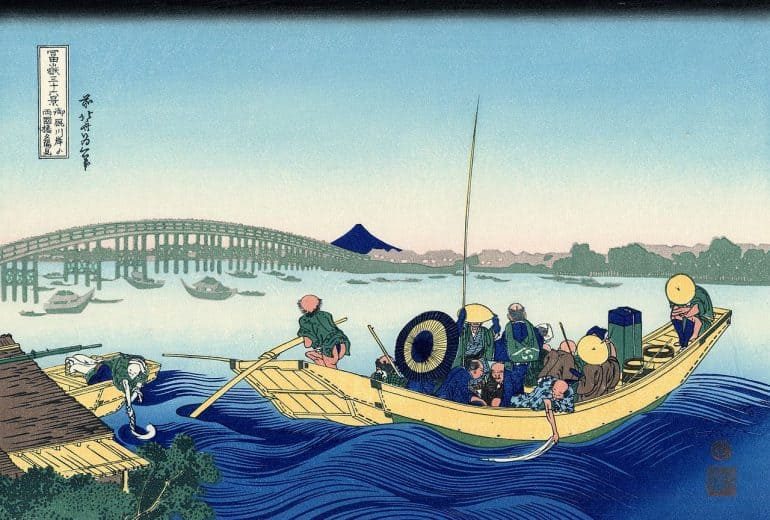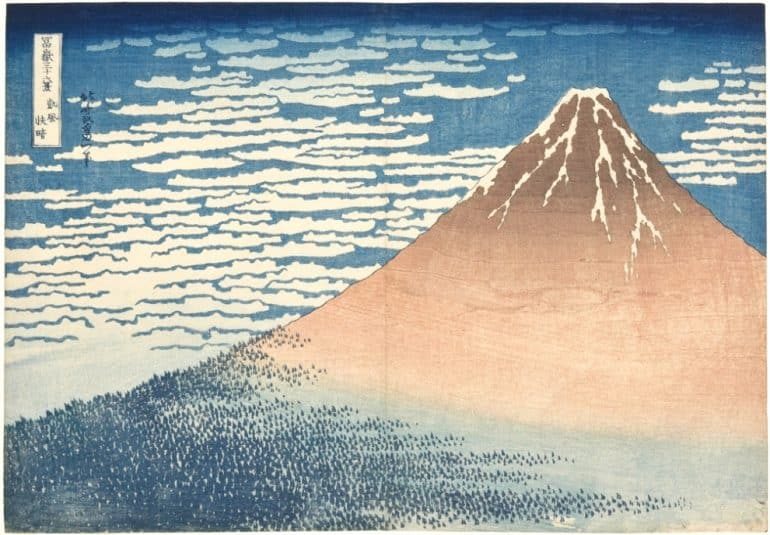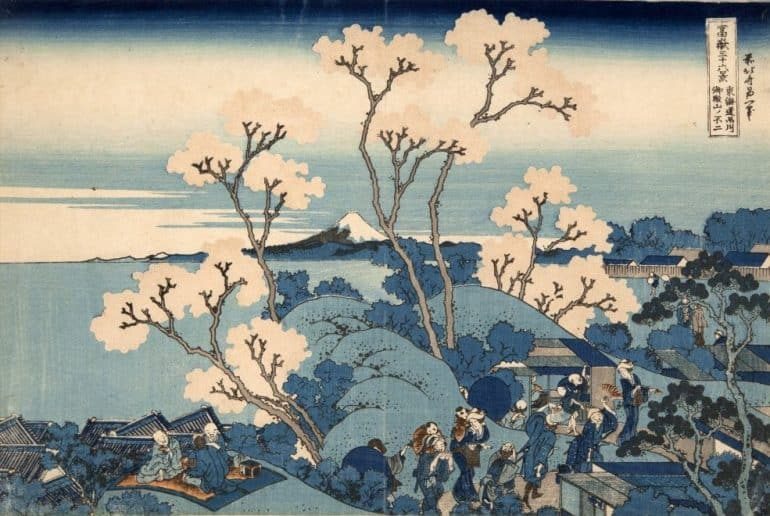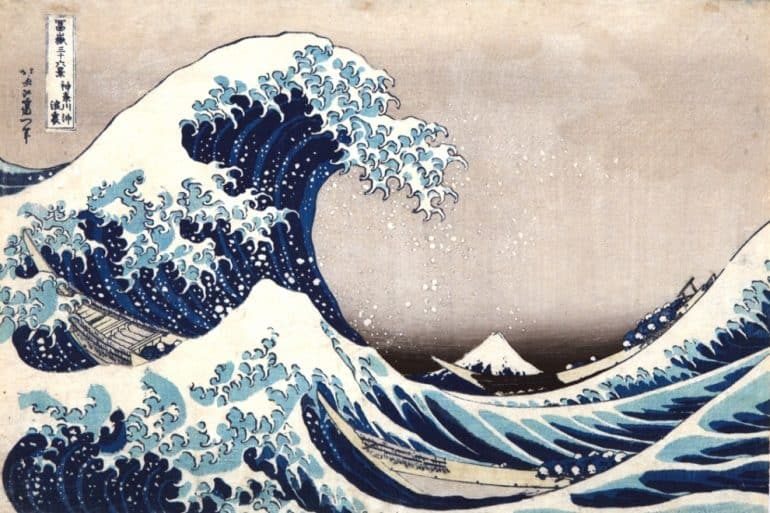Katsushika Hokusai’s artworks in Rome’s Ara Pacis Museum
The Great Wave, Katsushika Hokusai’s iconic painting, invokes the terror of the 15-meter tsunami that took down Fukushima in 2011, the pummelling hurricanes of the past month. In the wood-block print, the wave towers over a distant Mt. Fuji, its finger-like foam edges menacing sailors who dangle from flimsy boats. Almost two hundred years after his death, Hokusai’s prints, painted scrolls, and ‘manga’ sketchbooks still illicit this kind of immediate, visceral reaction.

The Hokusai exhibition, currently showing at the Ara Pacis Museum, comprises 200 works, to be shown in two phases. With contemporaries such as Kiesan Eisen, Hokusai reflects contemporary Japanese life in the 1800s, with a focus on nature, the lives of peasants, fishermen, and courtesans. He is humorous or erotic. His lines are precise or diffuse. Over the course of his lifetime, he changed his name at least 30 times, in tandem with new directions in his art.

A favorite part of the exhibition was Hokusai’s leather-bound sketchbooks, displayed under glass, inviting viewers up close to see his playful experimentation with line and gesture. In one, an old man leaps about in a short kimono, sometimes mooning the viewer. Another shows the cartoonish portraits of grandfathers, with all varieties of wrinkles, eyebrows gone awry, and rounded jowels. These notebooks were used as teaching tools in Japan, and as far away as Europe, where French Impressionists such as Manet, Monet, Toulouse Lautrec, and Van Gogh looked to Hokusai for his compositions, perspective, and pattern play.

The cultural contrast between the European and Japanese contemporaries, however, is striking. While the subjects of iconic Impressionist paintings lounge in repose, drink wine by a lake, or reflect in a parlor, Hokusai’s subjects are in continuous, laborious motion. They are hunched over, with heavy sacks on their backs, or poles across their shoulders. They fish and harvest rice, a collective.

By contrast, Keisai Eisen, one of Hokusai’s peers, was more interested in the individual. His series Beauties along the 53 stations of the Tokaido shows one woman applying make-up, another boiling a kettle for tea, another doing something with a sword. [In a similar vein, trace the roots of animé porn in Hokusai’s The Dream of the Fisherman’s Wife, with the supine spouse and two octopi, in the Adults-only section of the exhibition.]

Throughout the show, Hokusai’s humility, a sense that he is constantly in pursuit of something larger than himself, seeps through. Near the exit, an excerpt from Hokusai’s journal is transcribed in white letters on a red wall: “I have been in love with painting ever since the age of six…until the age of 70, nothing I drew was worthy of notice…at 110, every dot and every stroke will be as though alive.”
Ara Pacis Museum
Lungotevere in Augusta
Till 14 January 2018
Opening hours:
Daily from 9.30am – 7.30pm
Entry fee: €9-11





